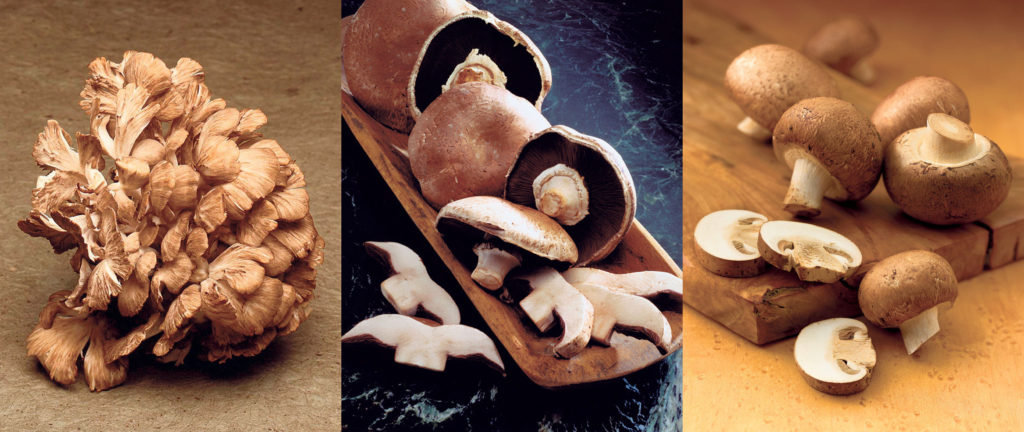
It’s not the idea of being harvested from flats of manure that has us going wild for mushrooms; it’s more because of its versatility and subtle, yet earthy flavor that makes mushrooms one of the top selling produce items in America. According to the Mushroom Council, U.S. mushroom growers produced more than 946 million pounds of the fungi last year.
“Mushrooms are a delicious, nutritious, sustainable and extremely versatile food, making them a great addition to every meal of the day,” said Bart Minor, president of the Mushroom Council.
The nutritional benefits of mushrooms make them a fun, healthy choice. They are low in calories, fat- free and cholesterol free. Mushrooms are low sodium, but rich in umami, meaning they taste great even without adding salt. Mushrooms are packed with vitamin D, selenium, B vitamins and potassium.

There are more than 50 species of mushrooms and more than 100,000 varieties. There are five that are commonly used in recipes and found in most stores.
• White
• Oyster
• Portobello
• Shiitake
• Cremini
We spoke with several Long Island Weekly readers last week about their top choices for ways to use mushrooms and their favorite dishes. The results were overwhelmingly simple: fried, stuffed, sautéed, grilled and of course, raw. Many vegans choose a grilled Portobello in place of their burger. Others love their mushrooms on pizza, in an omelet, in a soup or a sauce or chopped over a fresh salad.
Mushrooms are increasingly sustainable. New studies, according to the Mushroom Council, find that the annual average yield of mushrooms is 7.1 pounds per square foot—meaning up to 1 million pounds of mushrooms can be produced on just one acre.
Pull up a toadstool and load up on your daily serving of fresh fungi. Your body will thank you.
































